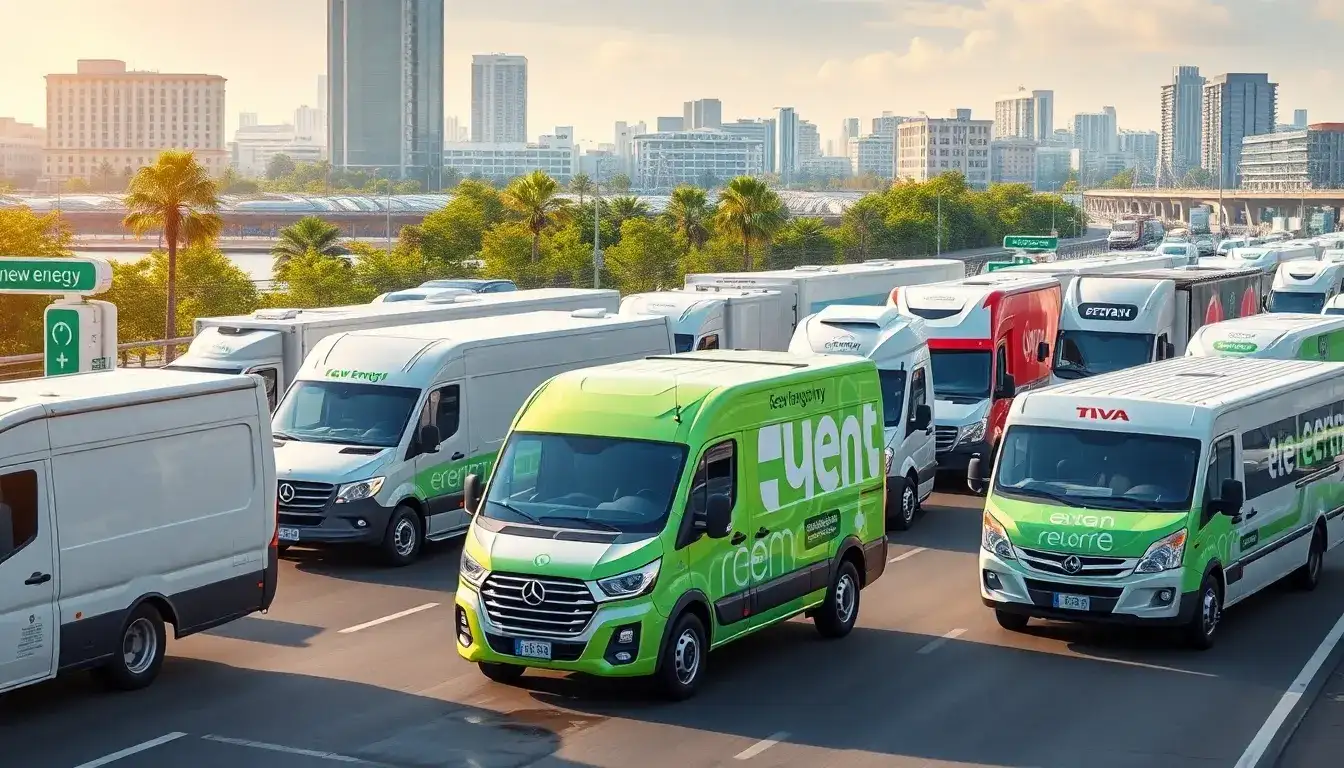
The penetration rate of new energy commercial vehicles has reached 17%! Commercial vehicle manufacturers are accelerating their “electrification” strategies.
In the first two months of this year, China sold 79,000 new energy commercial vehicles, marking a 51% year-on-year increase. The market penetration rate rose from 12% in the same period last year to 17%. During the recent China Electric Vehicle 100 People’s Forum (2025), experts indicated that new energy commercial vehicles are transitioning from being driven by policy to being propelled by market demand.
Ma Fanglie, a senior advisor at the China Electric Vehicle 100 People’s Association, stated, “The new energy commercial vehicle sector has entered a new phase characterized by rapid market-driven growth.”
Recent data reflects the current growth trends in new energy commercial vehicles. In February, sales saw a remarkable 184% year-on-year increase, outpacing the overall growth rate of commercial vehicles, which stood at 68.4%. The market penetration rate surged by 8 percentage points.
Among these vehicles, new energy buses had the highest penetration rate at 35.5% in February. New energy logistics vehicles followed, with penetration rising from 13.3% last year to 21.5%. New energy heavy trucks showed the most significant growth, with their penetration rate increasing from 7.6% last year to 17.6% this February.
According to Li Shaohua, deputy secretary-general of the China Association of Automobile Manufacturers, the rapid growth of new energy commercial vehicles can be attributed to the continuous rollout of national subsidy policies, requirements for energy-saving and low-carbon regulations, improvements in battery technology, and enhancements in charging infrastructure.
In response to the burgeoning market, commercial vehicle manufacturers are keenly launching new products. At a business meeting on April 1, Foton Motor unveiled three new models: the Tuyano X5, Ouhang Zhilian EHL, and Ouman Galaxy 3, targeting urban logistics, sanitation operations, and regional distribution.
Zhang Hongliang, president of Foton’s Tuyano division, noted that with the surge in demand for e-commerce logistics and urban distribution, the limitations of traditional VAN models, such as low space utilization and poor energy compatibility, have become increasingly apparent. In contrast, new energy logistics vehicles are experiencing explosive growth, with February sales up 173%, with models like the Wuling Yangguang and Changan Ruixing EM60 performing well.
In line with this trend, Foton launched the Tuyano X5, aiming to overcome traditional VAN limitations with its “full-area expansion architecture.” Its pure electric version features a CATL “Tianxing L” battery with a range of 520 km. Additionally, its modular body allows for flexible height and wheelbase configurations, increasing transport capacity by 15%.
The launch of the Ouhang Zhilian EHL addresses the demand for new energy sanitation vehicles driven by policy and market forces. For instance, in 2023, Beijing’s ecological environment bureau proposed that by 2025, public sectors such as buses, sanitation, and taxis will largely transition to new energy sources. Following this push, the new energy sanitation vehicle market has seen a steady increase in sales since last year, with multiple commercial vehicle enterprises, including Zoomlion and Yutong, making significant moves in this area. Foton’s Ouhang Zhilian EHL is designed for low-entry sanitation tasks, enhancing operational power by 7.5% and energy output by 10% to improve working conditions.
Currently, the new energy heavy truck segment is witnessing the most remarkable growth. Following a rapid increase in January, sales in February reached 8,216 units, reflecting a 298.83% year-on-year increase, with 13 companies selling over 100 units each. According to data from the First Commercial Vehicle Network, sales of new energy heavy trucks in March are expected to grow by 1.6 times year-on-year, with an industry penetration rate around 19%.
In light of the rapid market developments, numerous commercial vehicle manufacturers are strategically positioning themselves in the new energy heavy truck sector. Recently, the Ministry of Industry and Information Technology announced the 382nd batch of new vehicles, which included 173 new energy heavy trucks, of which 118 were pure electric, 35 were battery-swappable, 14 were fuel cell, and 6 were plug-in hybrid models, from leading manufacturers such as Sinotruk, FAW Jiefang, and Dongfeng.
As a key player in China’s commercial vehicle market, Foton has launched its new heavy truck, the Ouman Galaxy 3, adopting a multi-technology strategy with diesel, pure electric, and hybrid versions. The pure electric variant features an in-house electric drive axle and control system, improving efficiency by 30%, while the hybrid version achieves a thermal efficiency exceeding 50%.
According to a Foton representative, the “New Energy 30·50” strategy is now a top priority in the company’s development plan. Under this strategy, Foton is meticulously planning a triad of technology pathways: pure electric, hybrid, and fuel cell, to anchor the company’s development and set new targets.
With advancements in battery technology and increasing ranges, electric commercial vehicles are not only excelling in short-haul transport but are also beginning to make their mark in long-haul freight. As ultra-fast charging technology rapidly evolves, alongside continuous improvements in charging infrastructure and a more complete industrial chain, electrification is gradually shifting from being solely policy-driven to being propelled by both policy and market demand. Li Shaohua believes that in terms of market trends, the growth momentum for electric commercial vehicles will be particularly strong in the future.







